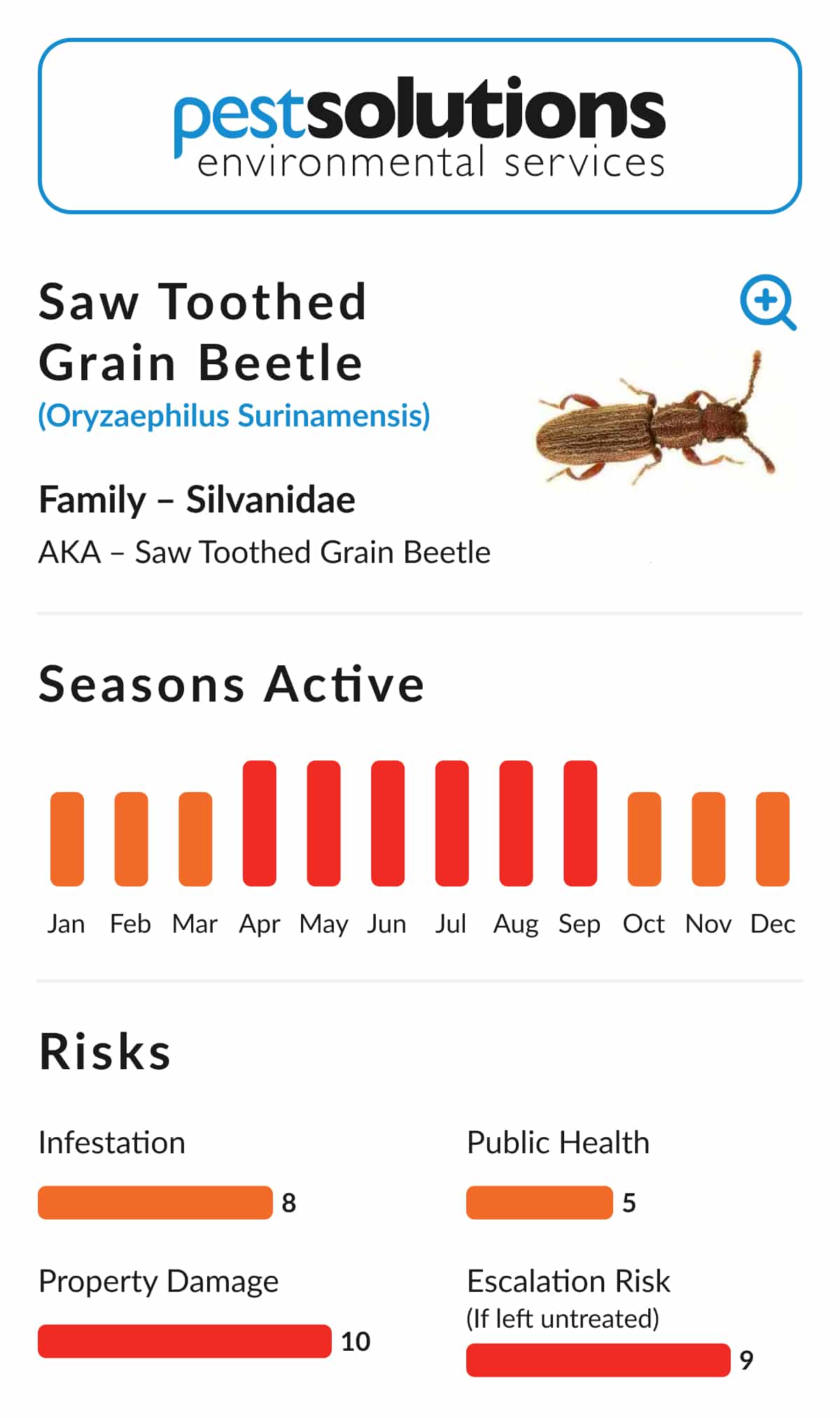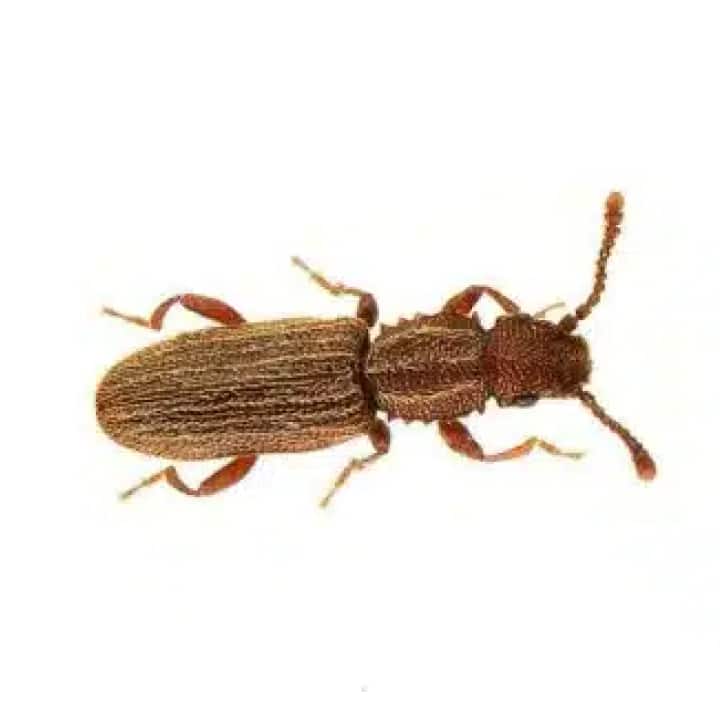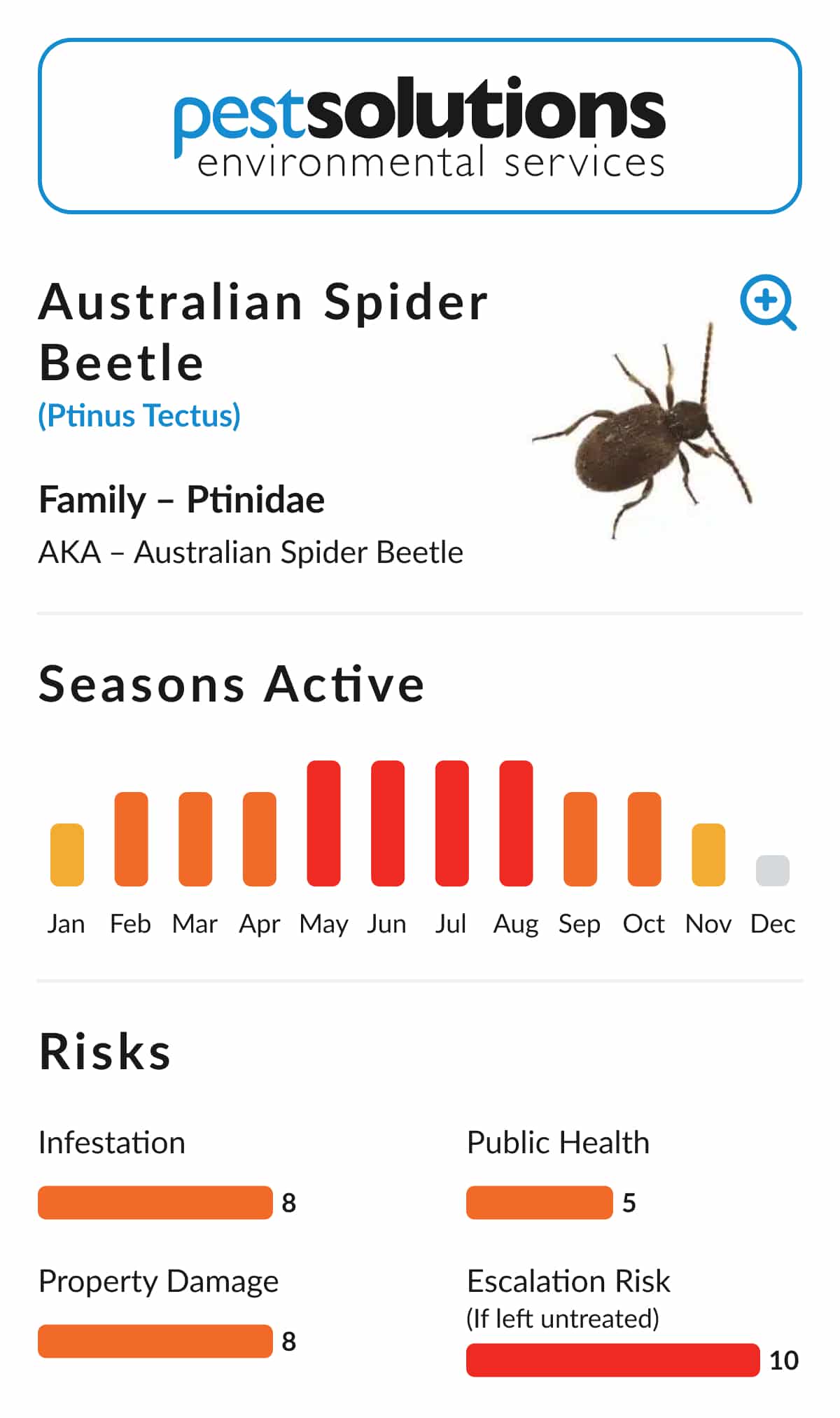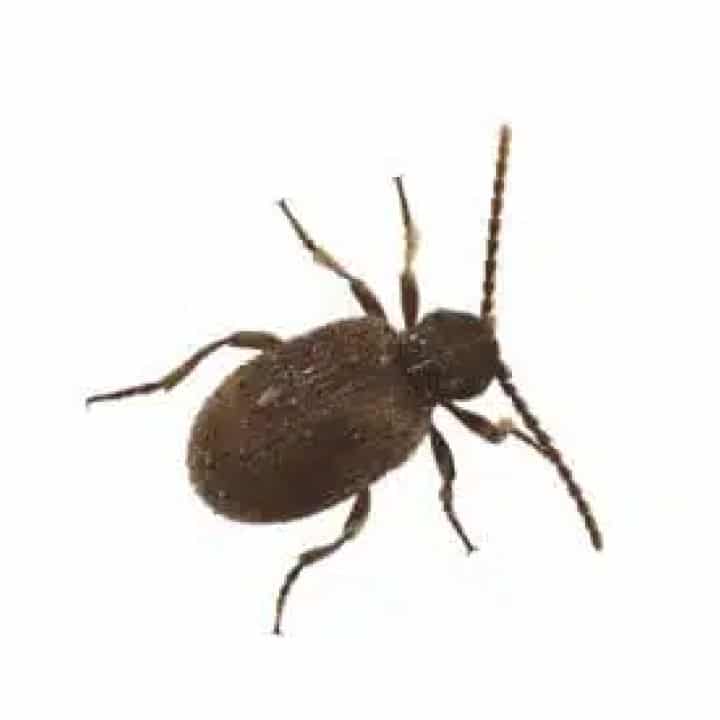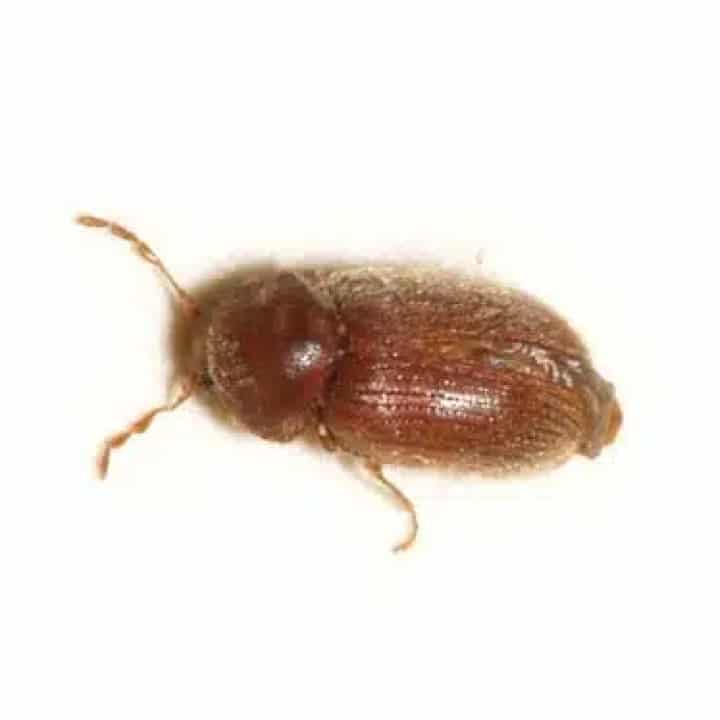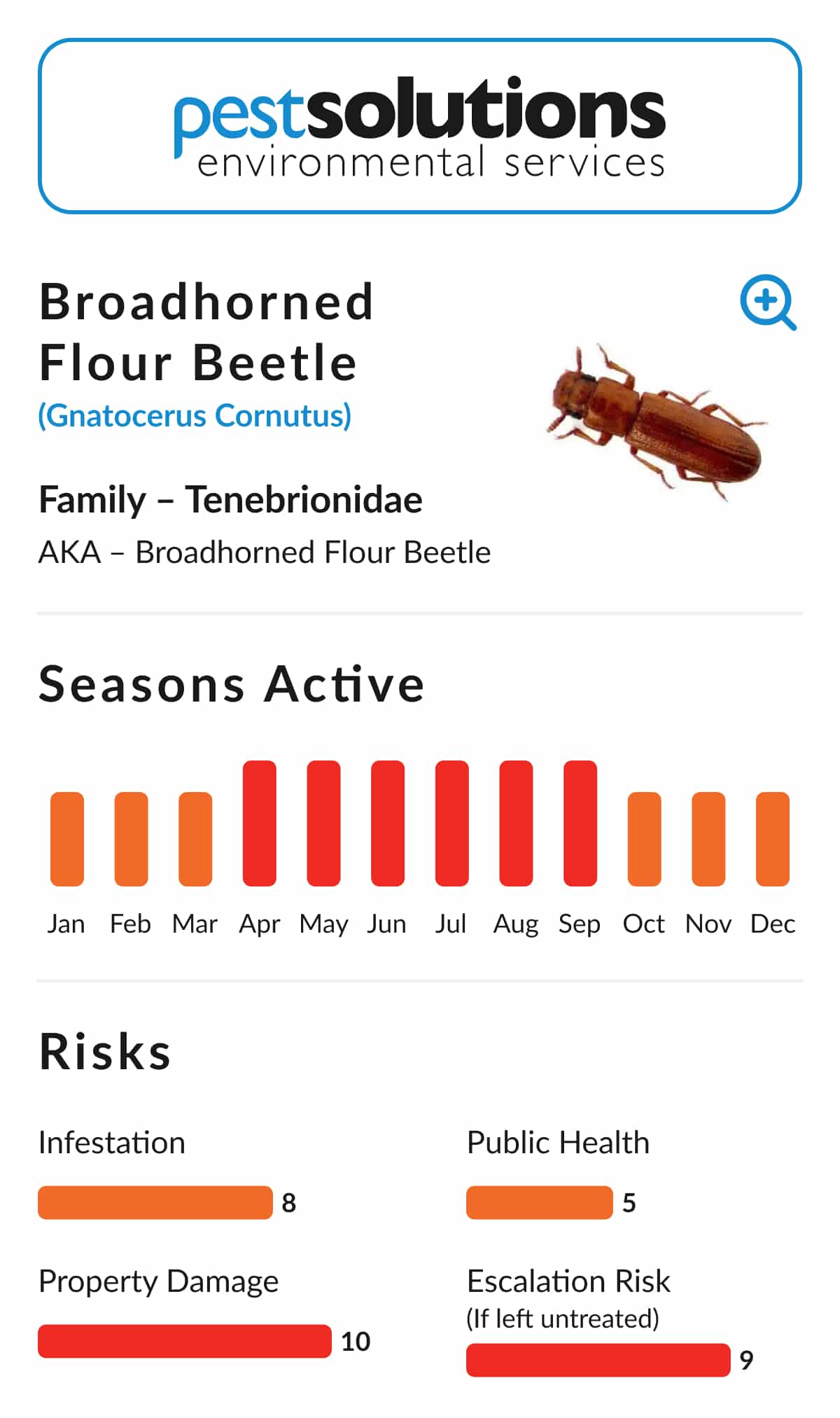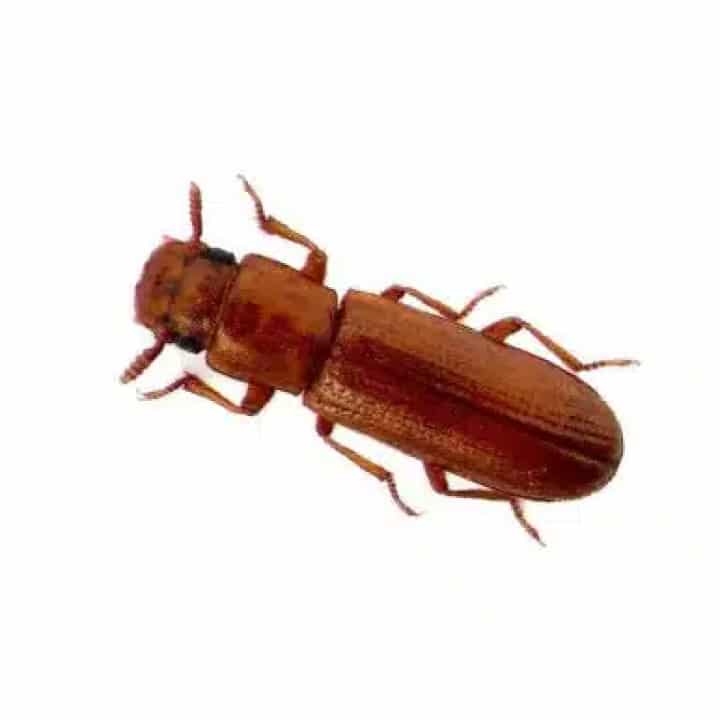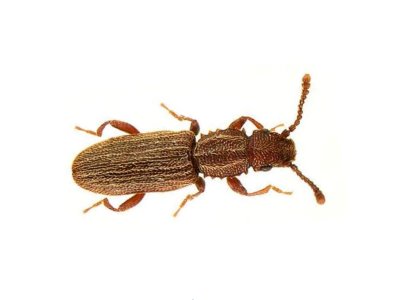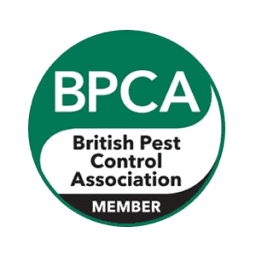Habitat and Distribution – Saw-toothed Grain Beetle (Oryzaephilus surinamensis)
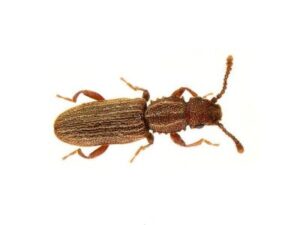
Biology – Saw-toothed Grain Beetle (Oryzaephilus surinamensis)
The Saw-toothed Grain Beetle undergoes a complete life cycle consisting of egg, larva, pupa, and adult stages. A female can lay up to 400 eggs, usually at a rate of 6 to 10 per day, directly on or near larval food sources. Eggs hatch in just a few days, and the active, free-living larvae begin feeding—typically on damaged grains or other accessible foodstuffs. Larval development takes between 2 and 6 weeks. Pupation occurs in small cocoons spun among the food material, lasting from a few days to approximately two weeks. Adults measure 2.5 to 3.5 mm in length, are dull brown in colour, and have a distinctive slender shape with six saw-like “teeth” along each side of the thorax. The full life cycle is typically completed within 1 to 3 months, depending on environmental conditions.
Why They’re a Problem – Saw-toothed Grain Beetle (Oryzaephilus surinamensis)
This species is the most important grain pest in the UK. Infestations can cause:
- Heating of stored grain, resulting in “hot spots” and mould growth
- Physical damage to grain and cereal products
- Loss of germination in stored seed grain
- Contamination of a wide variety of food products
Its ability to spread rapidly and infest multiple types of stored goods makes it a serious concern for both bulk storage and food retail operations.
Control and Prevention – Saw-toothed Grain Beetle (Oryzaephilus surinamensis)
Control strategies depend on the type of facility and the severity of the infestation:
In grain stores:
- Monitor using bait bags and traps
- Dry and cool grain to inhibit development
- Treat with approved insecticide admixtures
- Fumigate with phosphine in severe cases (by licensed specialists)
In other premises:
- Survey using bait bags to detect presence
- Remove and dispose of small infested consignments
- Fumigate larger consignments where necessary
In all stores:
- Use approved residual sprays and dusts to treat surfaces
- Be aware that some beetle populations may show resistance to certain organophosphate insecticides
Regular monitoring, good hygiene, and prompt intervention are essential for effective control.
Professional Support – Saw-toothed Grain Beetle (Oryzaephilus surinamensis)
If you’re dealing with a Saw-toothed Grain Beetle infestation, early detection and proper treatment are essential to prevent widespread contamination and loss. Pest Solutions provides expert identification and pest control services tailored to food storage and processing environments.
Visit https://www.pestsolutions.co.uk to get in touch with our team or schedule a professional inspection.
